Plaque initiative connects Westmount residents with neighbourhood history
Tracey Course was certain that she wanted to live in Westmount's architectural heritage area.
An Englishwoman who had been residing in a newer part of Edmonton since she moved to Canada in 2005, she missed the charms of home. She was used to living in older houses, and had even previously lived in a 17th-century cottage in the south of England.
So when, in 2011, the perfect bungalow became available on 125th Street, she flew back from a work trip in Ottawa just to see it.
Within in a week of it going on the market it was hers — not uncommon for area heritage homes — and since then, it's been a continuous labour of love.
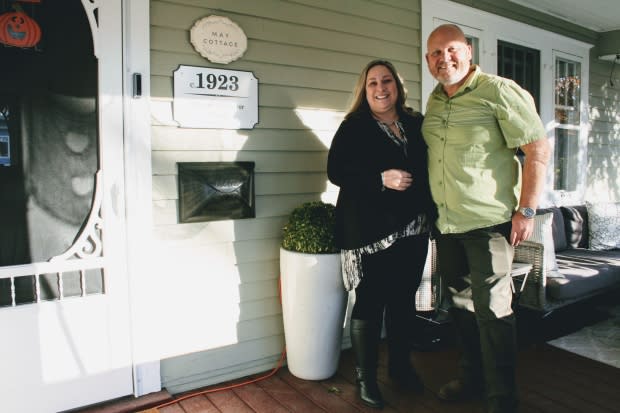
Maintaining the historic character of her house is a passion she shares with many of her neighbours.
As the 100th anniversary of the neighbourhood approached, the Westmount Heritage Committee looked for ways to mark its centennial.
"One of the initiatives that came to mind was, 'Gee, well, maybe we can honour all of these homes that are still standing from the early years when Edmonton and when Westmount were just new on the map,'" said committee member Kelly Deis.
So began the historic plaque initiative.
Residents apply for historic markers
Residents living in houses built before 1940 may apply for heritage plaques they can mount on their houses. The plaque displays the year the house was built, as well as its first occupant and his or her occupation.
So far, 68 residents have applied for plaques that now dot the neighbourhood — mostly on 122nd, 123rd, 125th, 126th and 127th streets between Stony Plain Road and 111th Avenue.
The initiative has inspired residents to learn about their homes' first occupants or return to previous research with renewed enthusiasm.
Course learned that her cottage's original owner was Howard Publicover, a fisherman originally from Nova Scotia. He Married Betsey and had two children. The Publicovers stayed in the house until their deaths in 1953. The couple died within four months of one another. Course isn't sure why, but she has visited their graves in a cemetery in nearby Queen Mary Park.
"Everyone's talking about the heritage and the history," she said. "I think as residents here, we're appreciating it more, and therefore, we're going to protect it more."
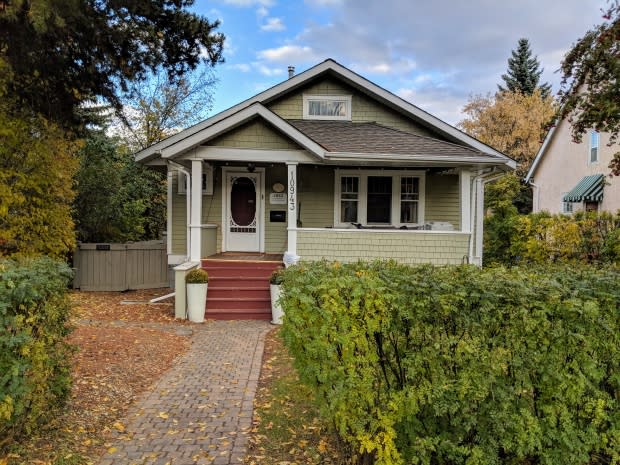
Course's neighbour lives in a house previously occupied by First World War aviation hero Wilfrid Reid (Wop) May. Course comes from an aviation family herself — and works in the aviation industry — so she named her house May Cottage in honour of its neighbour.
A few blocks south of the May Cottage, Sarah Payne lives in a 105-year-old home with her husband Jordan and twin toddlers, Harvey and Penny.
They discovered that their original occupant was Frank Bride — a rancher with five children who seemed to split his time between Saskatchewan and Edmonton. But that wasn't the interesting part.
Two of his children were named Elaine and Eileen, and Payne soon discovered that the girls shared a birthday. "So, we do not have the first set of twins living in this house," she said.
Stephanie MacIsaac learned that her home's previous owner was a professional hockey player and accountant named Harold Deeton. He competed in two Stanley Cups (13 years apart!) with the then-named Edmonton Eskimos — a fact that tickled her hockey-playing son. He also won the Macdonald Brier men's curling championship in 1933.
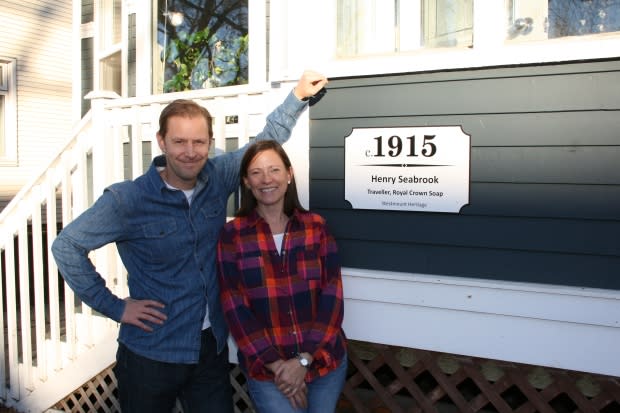
Deis said residents have even begun connecting with the descendants of their homes' original occupants. Some have found children and grandchildren of the people named on their plaques.
One of the challenges of the plaque initiative has been a lack of gender diversity. The Henderson's directory mostly listed only men, and their occupations. Finding information on their wives or partners is difficult.
"My one regret is that I didn't do a little more work at the end of my research to learn more about Henry's wife or partner," said Jay Summach, who lives in the 125th Street home originally owned by Henry Seabrook, a traveller for Royal Crown Soap. "If I found that information out, I would reapply, get a new sign."
For Jay and his wife, Anne Summach, applying for their plaque was a no-brainer.
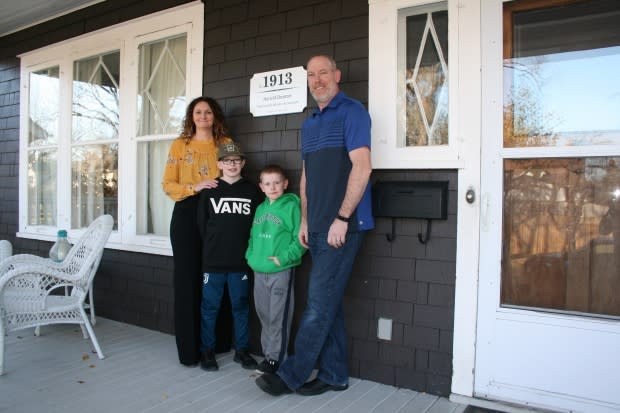
"We didn't realize that the year we moved in was its 100th birthday," said Anne Summach. "And then there was passed along remnants from previous renovations… little bits of paper and things that were from previous residents."
For her part, Course is considering reaching out to the Publicover's family members via Ancestry.ca.
"I fully suspect that some of their children and grandchildren will be coming out of the woodwork as the project becomes known," said Deis.
There was so much interest in the project that Deis and the Westmount Heritage Committee devised a tool to help navigate the area.
"We finished a map of the first 47 historic homes that have plaques. In there, we have a picture of the home and we have the story of either the house itself in terms of the architectural design of it, or the first occupant and or where they worked and the business that they worked in."
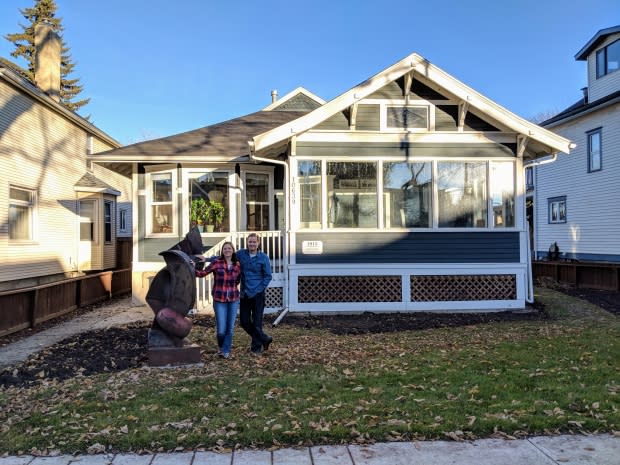
Eventually, Deis said, they'll open up the program to any house older than 50 years, so that more residents can explore the roots of their homes.
"It's kind of neat to understand who was in these houses before and to have that connection to the people who have come here," said MacIsaac.
"To imagine Harold and [his wife] Mary spending their time here and starting to raise their kids, and who came after that... It's sorta neat in that now we're doing the same thing 105 years later."

